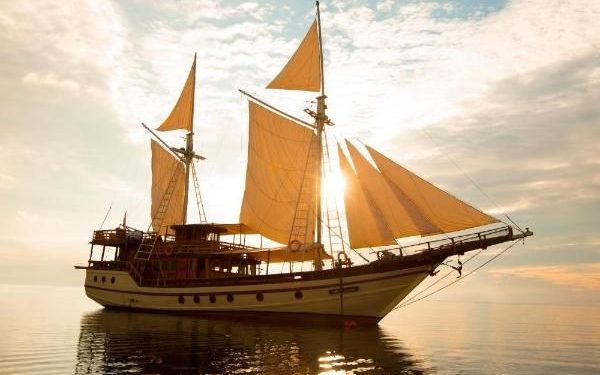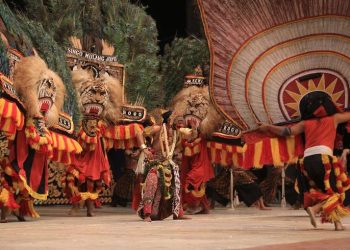Jakarta, Indonesia Sentinel — The Pinisi boats, Indonesia’s traditional sailing vessel originating from Bulukumba, South Sulawesi, is more than just a means of transportation. It represents a rich cultural heritage and artistic craftsmanship, cherished by the Bugis community for centuries.
The Bugis, along with the Mandar people of South Sulawesi, are renowned as master shipbuilders and exceptional sailors. These Pinisi boats have carried the Bugis far across the Indonesian archipelago, enabling them to establish communities on Java, Kalimantan, Sumatra, Papua, and the Nusa Tenggara islands.
The Pinisi boat traces its origins back to the 14th century, according to local legends and the ancient Bugis manuscript, I La Galigo. The art of Pinisi shipbuilding has been passed down through generations in Bulukumba, where families continue to practice the traditional techniques of their ancestors.
In recognition of this maritime heritage, UNESCO inscribed the art of Pinisi boat-building on its list of Intangible Cultural Heritage in 2017, highlighting its global significance as a testament to South Sulawesi’s traditional shipbuilding expertise.
A Legendary Origin
The origins of the Pinisi biats are steeped in folklore written in I La Galigo scripture. Story told that the first Pinisi boat was constructed by Sawerigading, the Crown Prince of the Kingdom of Luwu. Using wood from the sacred welengreng tree, known for its strength and durability, Sawerigading built the vessel to sail to China and marry Princess We Cudai.
After successfully marrying the princess, Sawerigading returned to his homeland of Luwu. However, as his ship approached the shores of Luwu, it was struck by massive waves and shattered into pieces. The fragments of the boat washed ashore in three locations: Ara, Tana Beru, and Lemo-lemo, all in Bulukumba.
The story said that the local communities then reassembled the pieces, creating the majestic Pinisi vessel. From that moment up to this day, Bulukumba remains a hub for Pinisi boats production, with craftsmen preserving the time-honored techniques inherited from their ancestors.
Design and Construction of the Pinisi Boat
The Pinisi boats features two primary masts and seven sails, symbolizing the courage of Indonesia’s ancestors who braved the seven seas. Its construction remains deeply rooted in tradition, often taking place on the beach to allow the vessel to be launched directly into the sea upon completion.
A Unique Crafting Process
The construction of a Pinisi boats involves distinctive rituals that honor the Bugis culture. Selecting the wood for the boat is a ceremonial process, guided by traditional beliefs about auspicious days.
Building begins with the installation of the keel, a process marked by a small ritual involving symbolic offerings, such as food and a white rooster, to invoke safety and good fortune. These cultural practices underscore the profound philosophical and spiritual values embedded in the creation of each Pinisi.
X May Have Algorithm Bias Favoring Republican and Elon Musk’s Content, Recent Study Found
The choice of wood is critical in constructing a durable and seaworthy Pinisi boat. Craftsmen rely on strong, long-lasting timber varieties to ensure the vessel can endure harsh maritime conditions.
- Ironwood (Kayu Ulin): Known for its exceptional hardness and durability, ironwood is the preferred material for the keel, masts, and other essential structural components that must resist seawater exposure.
- Bangkirai Wood: Resistant to water and marine organisms, Bangkirai is often used in structural parts to enhance strength and longevity.
- Meranti Wood: Lighter than ironwood and Bangkirai, Meranti is typically used for interior elements and less exposed exterior sections.
- Cengal Wood: Valued for its durability and resistance to marine environments, Cengal is employed in areas requiring extra structural reinforcement.
- Belian Wood (Ironwood): Renowned for its toughness and resistance to saltwater, Belian is often used in the lower hull construction.
The careful selection of wood ensures that every Pinisi boats embodies strength, resilience, and the cultural values of its creators. Despite its fungtionality, each timber type adds unique characteristics to this traditional craft.
The enduring legacy of the Pinisi boats highlights the ingenuity and resilience of South Sulawesi’s maritime culture, cementing its status as a symbol of Indonesia’s seafaring heritage. With its elegant design, intricate craftsmanship, and cultural significance, the Pinisi is not just a vessel but a legacy of Indonesia’s maritime history.
(Raidi/Agung)
























